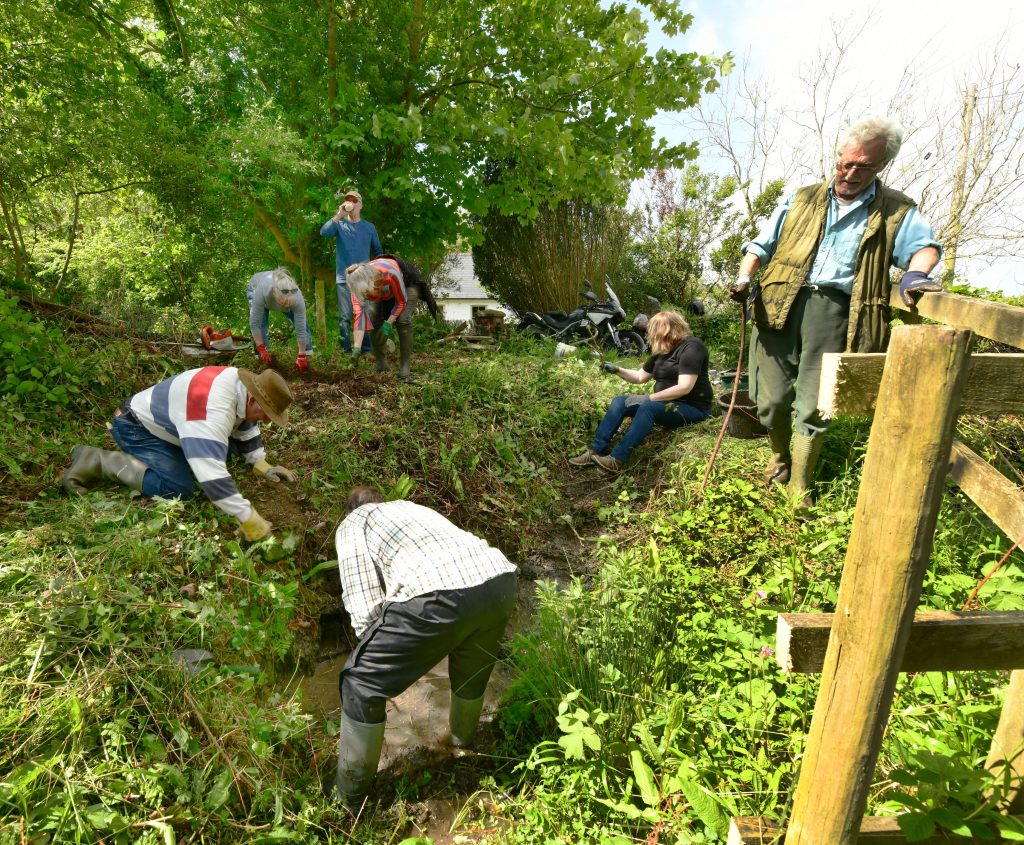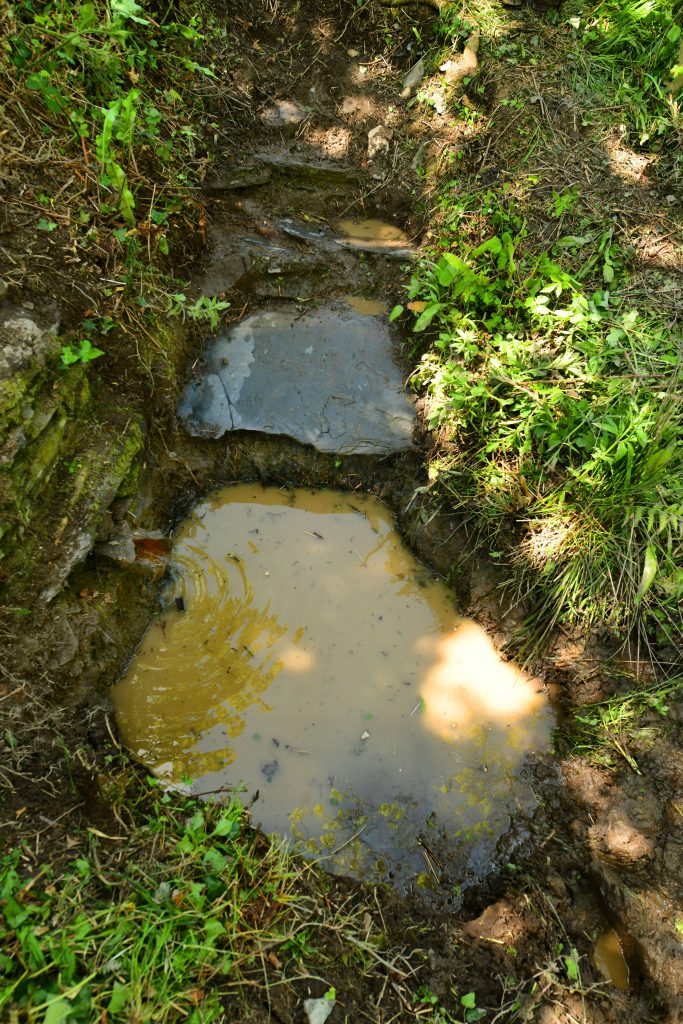Ffynon Fair (St Mary’s Well) in Llangrannog is situated just up the road from the churchyard on the right hand side. The site is owned by the Llangrannog Welfare Committee, and we have long thought to do something with it. When we were approached by James Stewart and well expert Phil Cope, we were delighted to plan to uncover the well.

The first work party got going on 15 May, followed by more clearing the next week. Enjoy some of the photos and the water test results; more information to follow. If you would like to get involved, email info@llangrannog.org.uk.
PDF file: Ffynon Fair Project Overview
FIRST WATER TEST from Llangrannog Well
Sunday 15 May 2022
This is a fairly basic first test, but gives an interesting (and mostly positive) analysis of the (surprisingly clean in the circumstances) water
Total Hardness 50mg per litre (low)
Free Chlorine 0mg per litre
Iron 0mg per litre
Copper 0mg per litre
Lead 0mg per litre (good news)
Nitrate 10mg per litre
Nitrite 0mg per litre
Bromide 6mg per litre
Total Chlorine 0mg per litre
Fluoride 0mg per litre
Cyanuric Acid 0mg per litre
Carbonate 80mg per litre
Total Alkalinity 80mg per litre
pH 6.4 (7-8.4 is good)







- Ffynon Fair (notes from a Welfare Committee meeting with James and Phil)
Welcome to Phil Cope (author of The Living Wells of Wales) and James Stewart to discuss Ffynon Fair.
James’s mother grew up in Llangrannog at the rectory; his grandfather was the rector. His mother had an interest in the well and James would like to pay for Phil to do a consultancy in memory of his mother.
Phil believes this well has national significance.
Two phases are anticipated
- An examination of the meanings of well springs
- Phil offers a talk giving an intro to holy wells in general and FF and its possibilities to encourage support
- Determine what we know already about FF
- The naming(s) of wells (Welsh to Christianisation) – 50% have ended up becoming Lady Well or St Mary’s Well
- We should look at it in the context of all the others in the village – Penfynnon/Bywell
- Ownership and source of the water
- Importance of education esp. with children as a part of climate conerns. Part of plans on what the well’s future should be. Community involvement.
- Cranogwen’s poem Y Fynnon
- Well-dressing and well-guarding
- Initial exploration, cleaning and assessment of site
- Dyfed Archeaelogical Trust are interested; water test
- Further community meeting to show progress and designs for the future
- Press and publicising online etc.
- Budget and funding applications for Phase 2
- Phase 2 – Delivery. Buildling a new well, seating, surrounding, interpretation panel, direction signs etc.
- Well launch and possible festival
- Publication – TV, radio, papers etc.
- Links with other sites e.g. Carantek/Crantock/Irish site
Ian ap Dewi remembers being taken after Sunday School to drink the well water, and that it was known as Carannog’s Well. Speaking to John MO and Ian would be very useful.
Mary and June Sylvester would have some information.
Lowri Williams as director of Gwersyll yr Urdd
Boco and others of the Beechey family.
It was noted that some drainage work was done on the field and the spring does not flow as it used to. DAT could help here.
We can begin asking for stories and photos, but should hold forth on the physical work.
We are not bound by the rules of Cadw etc. so we can marry this with our own creative contribution to the development of the life of this well by buildling on what has gone before. What does this mean to us today; how is it relevant (e.g. ecology, water, climate etc.)?
Gather ideas of local artists, craftspeople, wall-builders, historians etc.
Within 12 months of agreement – could be done by September 2022. First open meeting could be Feb 2022. March school work. April cleanup. July 2nd meeting. Report Sept 22.
Plans etc. Early 2023. 2023 phase 2. Project completed May 2024.
Heritage Lottery Fund will be very keen especially as we have not had money from them before. This will not be a very expensive project.

Hi. The pH is similar to the water in my well which is at the top of the catchment of the Hawen. The nitrate levels are high relative to sampling of the Hawen earlier in the year and high relative to the Teifi and Aeron. It might be worth testing for E. Coli as this was noted in Hawen previously.